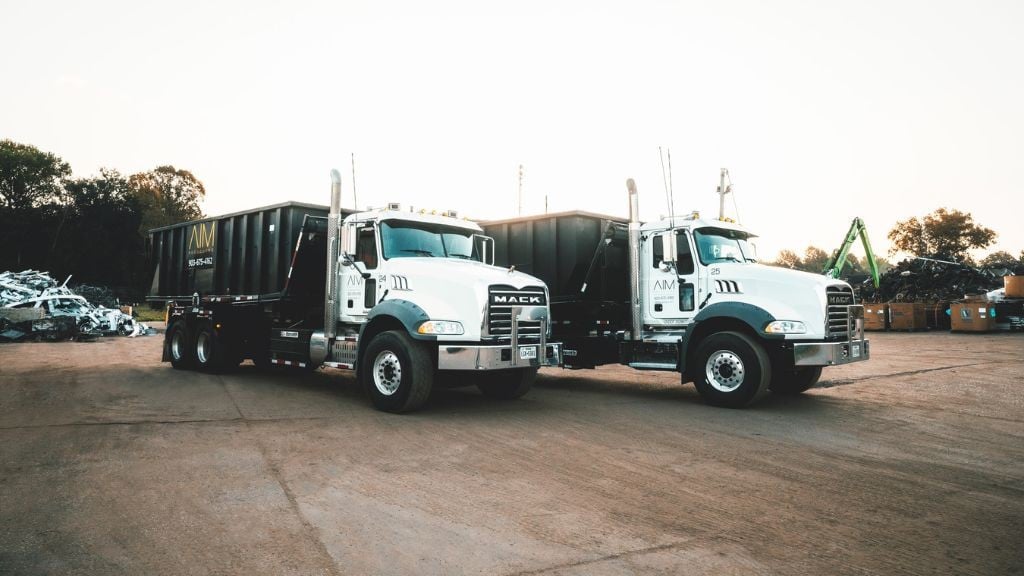
A piece of equipment that is not maintained properly is probably costing its owner in loss of production.
With a compost turner, the consequences can also extend to the end product. Compost that is not turned when needed will degrade, and if it continues to go unturned, that compost becomes worthless. Some regions even have regulations forbidding the sale of compost from windrows that haven’t been turned at the appropriate times.
“From what I’ve been exposed to I would say, typically, if a compost turner is not operable for three days, due to lack of maintenance, that’s about all most sites can tolerate on a practical level,” says Lance Langle, a service technician at Vermeer Freeman Manufacturing, Inc., a Vermeer company based in South Dakota. “At that point, their process starts getting interrupted – the oxygen and temperature levels that they’re monitoring start going out of specification.”
Despite this, some contractors and municipalities disregard what may be the most important step in keeping their compost turners operating in peak condition: regular maintenance.
“People, either for lack of awareness or lack of wanting to spend the time, don’t do that, and it really costs them in the long run,” Langle says.
He preaches the importance of maintenance, everything from daily checks to following the manufacturers’ recommended service intervals.
In Langle’s experience, flails are the item nearly all owners of drum-style compost turners ask about most. There are anywhere from a few dozen to more than 100 flails on most drums. As the parts of the machine that meet the windrow first and cut through it, flails can become bent or worn down over time. Langle recommends replacing flails that are bent or have lost 7.6 cm (3 inches) in length.
Drum-style compost turners dominate the market, but according to Vermeer, since elevating-face technology came on the scene a couple of decades ago, it has made an impact. On elevating-face compost turners, hundreds of teeth serve as the cutters on the turning system and generally take the place of flails as the priority maintenance item for owners. Another difference from drum-style machines is that elevating-face turners typically have a conveyor belt as part of their discharge system – another item to inspect for maintenance.
Follow service intervals
Even though many owners focus on flails and teeth, it’s just as important to care for other parts of a compost turner. Second on most lists is drive belts, but no one should forget about fluids, filters, grease points and even just keeping the machine clean to avoid corrosion.
Langle recommends checking all fluids the driveline, belts and flails or teeth every morning. The end of the workday is a good time for greasing, to clean the machine and to again check flails or teeth.
Operators also should keep their eyes and ears open while operating a compost turner. If an operator suspects they have encountered a contaminant, he or she should shut down the machine and inspect it. They also should be aware of any odd vibrations or sounds while in operation.
“I would say that the Number 1 indicator that there’s an issue, especially in self-propelled compost turners, is feeling a vibration or a road-full-of-potholes type of feeling,” Langle says. “That may mean you have a flail out, or contaminant in the windrow or even have something that is wrapped around the drum.”
The best operators also know how their compost turner normally sounds.
“When something is out of alignment or is pulling too hard, you should be able to hear that difference in sound,” Langle says.
Besides the daily checks, many manufacturers recommend certain maintenance be done at specific intervals. This may include changing engine oil, changing hydraulic filters, checking the tension of belts, and checking flails and teeth to see how much they’ve worn.
Langle says that the customer should review maintenance instructions provided by the manufacturer to determine what items should be performed on a regular basis and on what items their local dealer should be consulted.
Maintenance includes proper use
Part of the maintenance equation is operating a compost turner properly. This includes keeping windrow sizes within the dimensions recommended by the manufacturer for the compost turner being used. Breaking that rule puts stress on the machine.
“When something is out of alignment or is pulling too hard, you should be able to hear that difference in sound.” Lance Langle, service technician, Vermeer Freeman Manufacturing
There are a couple of reasons sites sometimes make their windrows too big. One is because from raw material to finished product, there will be a 50 to 70 percent reduction in windrow size. Windrows are often built bigger at first because people are planning on that shrinkage, but sometimes they misjudge.
The other reason is more intentional. Space is at a premium at many compost centres, and there’s a temptation to get the most out of every windrow.
“These machines run best when operated and maintained as manufacturers intended,” Langle says.
Additionally, training is necessary. Many compost sites have several operators who all use a variety of equipment. The site manager or owner should provide training to all of their compost turner operators to help the unit be as productive as possible.
Some people look at a compost turner and believe it to be a simple machine, Langle says. The engine turns the drum, it aerates the compost and that’s that.
“In reality, an operator and the owner of the machine need to understand that there is a lot of horsepower, a lot of torque,” he says.
The importance of maintenance also extends outside of the compost site. Public awareness and support of compost have grown greatly in the past decade. But because odour is part of running a compost operation, a “not in my backyard” attitude persists.
For that reason, turning windrows is important to maintain low odour levels. Many sites only have one compost turner, and maintaining it on a regular basis so it is available when they need it is a wise business decision.
“If there is a day where the wind is out of the right direction to avoid odour drifting to populated areas and they feel like they can turn their windrows, that’s the day they have to be running,” Langle says.
Greg Hennigan is a technical writer, based in Des Moines, Iowa, writing on behalf of Vermeer Corporation.



